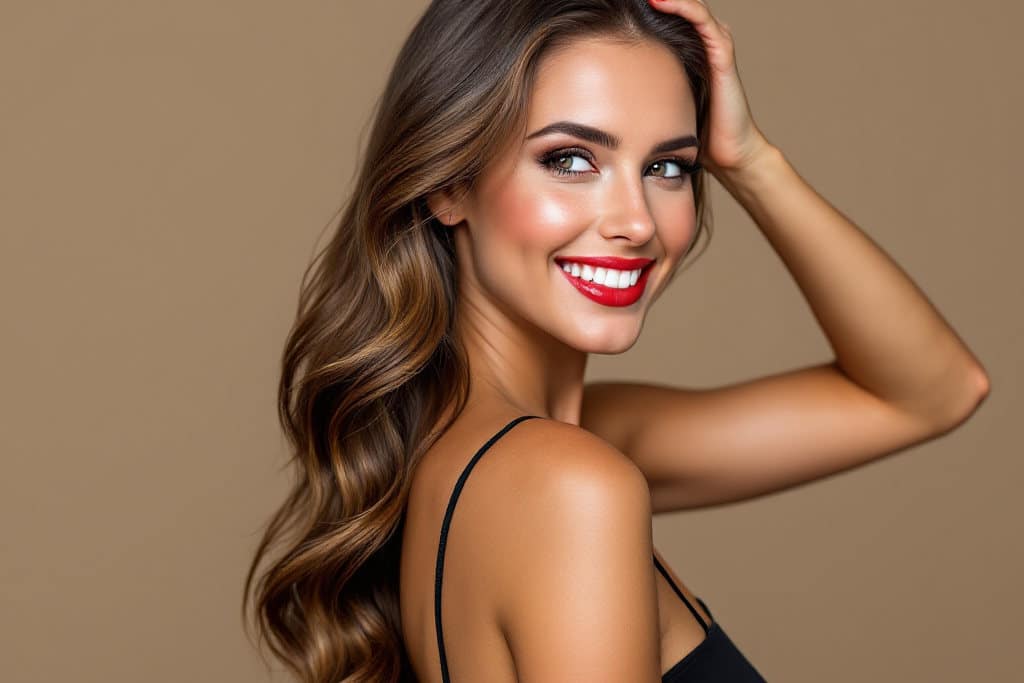
Beyond traditional hyaluronic acid dermal fillers, biostimulatory injectables offer a powerful approach to facial rejuvenation by encouraging the body’s own collagen production. Radiesse® and Sculptra® Aesthetic stand as two leading, yet distinctly different, options in this category. Understanding the key differences in the Radiesse vs Sculptra comparison is crucial for aesthetic professionals selecting the optimal treatment to address patient concerns related to volume loss and skin structure.
Core Distinction: Composition and Mechanism of Action
The fundamental difference in the Radiesse vs Sculptra equation lies in their active ingredients and how they stimulate collagen:
- Radiesse®: Developed by Merz Aesthetics, Radiesse consists of Calcium Hydroxylapatite (CaHA) microspheres suspended in an aqueous gel carrier. It provides immediate volume upon injection due to the gel, while the CaHA microspheres act as a scaffold, stimulating fibroblast activity and gradual collagenesis over time. You can find more details on this specific product here.
- Sculptra® Aesthetic: From Galderma Aesthetics, Sculptra is composed of Poly-L-lactic acid (PLLA) microparticles. It provides minimal immediate fill. Instead, it works by initiating a controlled, subclinical inflammatory response that gradually stimulates fibroblasts to produce new collagen over weeks and months, leading to progressive volume restoration.
This core difference dictates their clinical behavior, onset of results, and ideal applications.
Key Clinical Differences: Radiesse vs Sculptra
Practitioners must consider several practical distinctions when choosing between these biostimulators:
- Onset of Results: Radiesse offers immediate visible correction due to its gel carrier, followed by gradual improvement from collagen stimulation. Sculptra results appear gradually over several months as new collagen forms; there is little to no immediate effect after initial post-injection swelling subsides.
- Treatment Goal: Radiesse is often favored for providing structure, lift, and contouring, particularly in areas like the jawline, chin, and cheeks, or for hand rejuvenation. Sculptra excels at restoring broader facial volume loss and improving skin quality over larger areas like the temples, mid-face, and décolletage.
- Preparation and Technique: Radiesse comes ready-to-inject. Sculptra requires reconstitution with sterile water several hours to days prior to injection and necessitates specific injection techniques and diligent post-treatment patient massage to ensure even distribution and minimize nodule formation.
- Treatment Course: While dependent on the treatment area and degree of correction needed, Radiesse may sometimes achieve desired results in fewer initial sessions compared to Sculptra, which typically requires a series of treatments (e.g., 2-3 sessions spaced several weeks apart) for optimal outcomes.
Patient Selection and Considerations
The choice between Radiesse vs Sculptra also hinges on patient factors:
- Patient Expectations: Does the patient desire immediate improvement (favoring Radiesse) or understand and accept a gradual onset (suitable for Sculptra)?
- Treatment Area: Is the goal structural definition (often Radiesse) or widespread volumization and skin thickening (often Sculptra)?
- Patient Compliance: Can the patient adhere to the post-treatment massage protocol required for Sculptra?
Both products have robust safety profiles when used correctly by trained professionals. Adherence to protocols and understanding potential side effects are essential, as with all injectable aesthetic treatments overseen by bodies like the FDA.
Conclusion: Choosing the Right Biostimulator
In the Radiesse vs Sculptra debate, there isn’t a single “better” product; rather, they are distinct tools serving different clinical purposes. Radiesse offers immediate structural support combined with long-term collagen stimulation, while Sculptra provides gradual, natural-looking volumization through robust collagenesis. The optimal choice depends on a thorough patient assessment, clearly defined treatment goals, and the practitioner’s expertise with each product’s unique characteristics and requirements.

About the Author: Doris Dickson is a specialist writer for Health Supplies Plus, focusing on the aesthetic medicine industry. She diligently researches cosmetic treatments and products to provide clear, concise information relevant to licensed medical professionals. Her work supports Health Supplies Plus’s commitment to being a reliable informational resource and trusted supplier for the aesthetic community.
Disclaimer: The content provided in this article is intended for informational purposes only and is directed towards licensed medical professionals. It is not intended to be a substitute for professional medical advice, diagnosis, or treatment, nor does it constitute an endorsement of any specific product or technique. Practitioners must rely on their own professional judgment, clinical experience, and knowledge of patient needs, and should always consult the full product prescribing information and relevant clinical guidelines before use. Health Supplies Plus does not provide medical advice.
